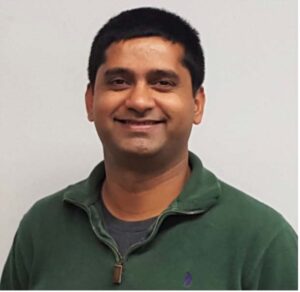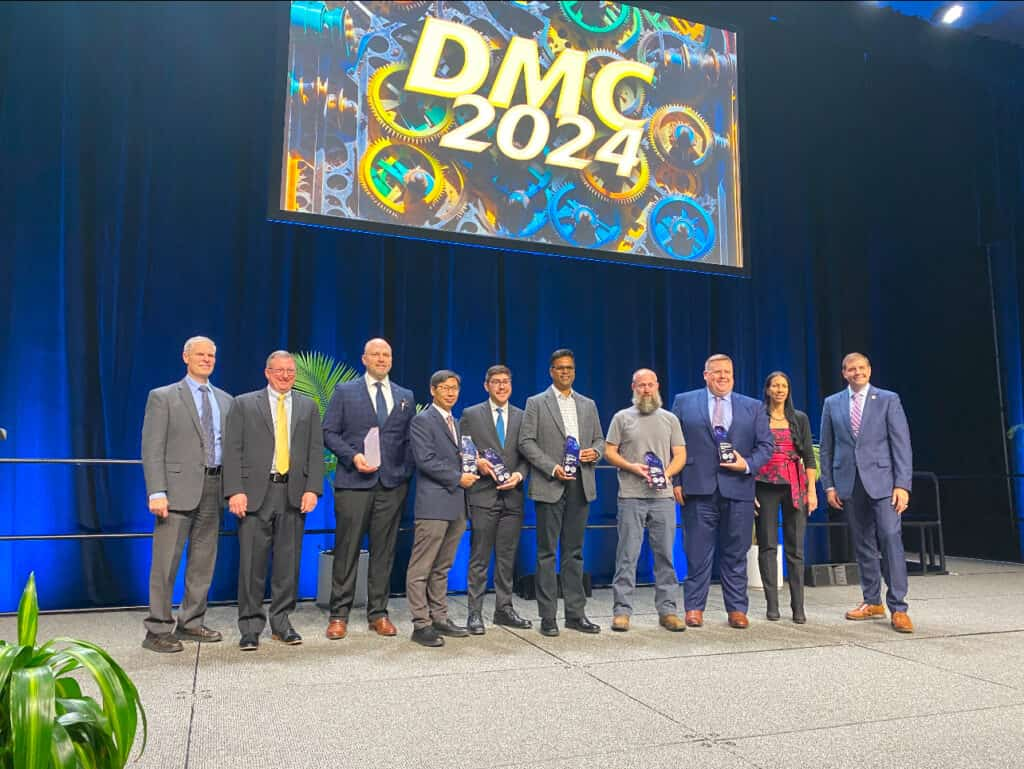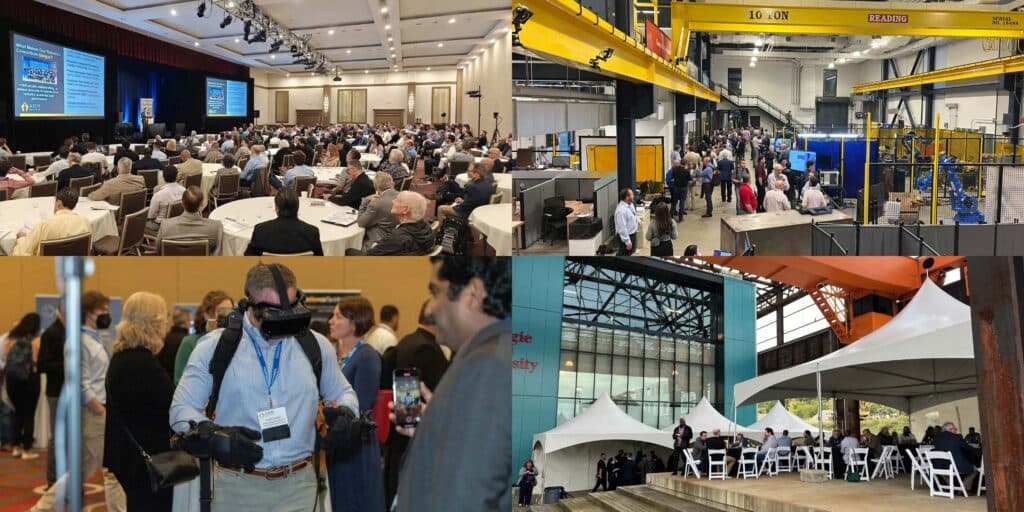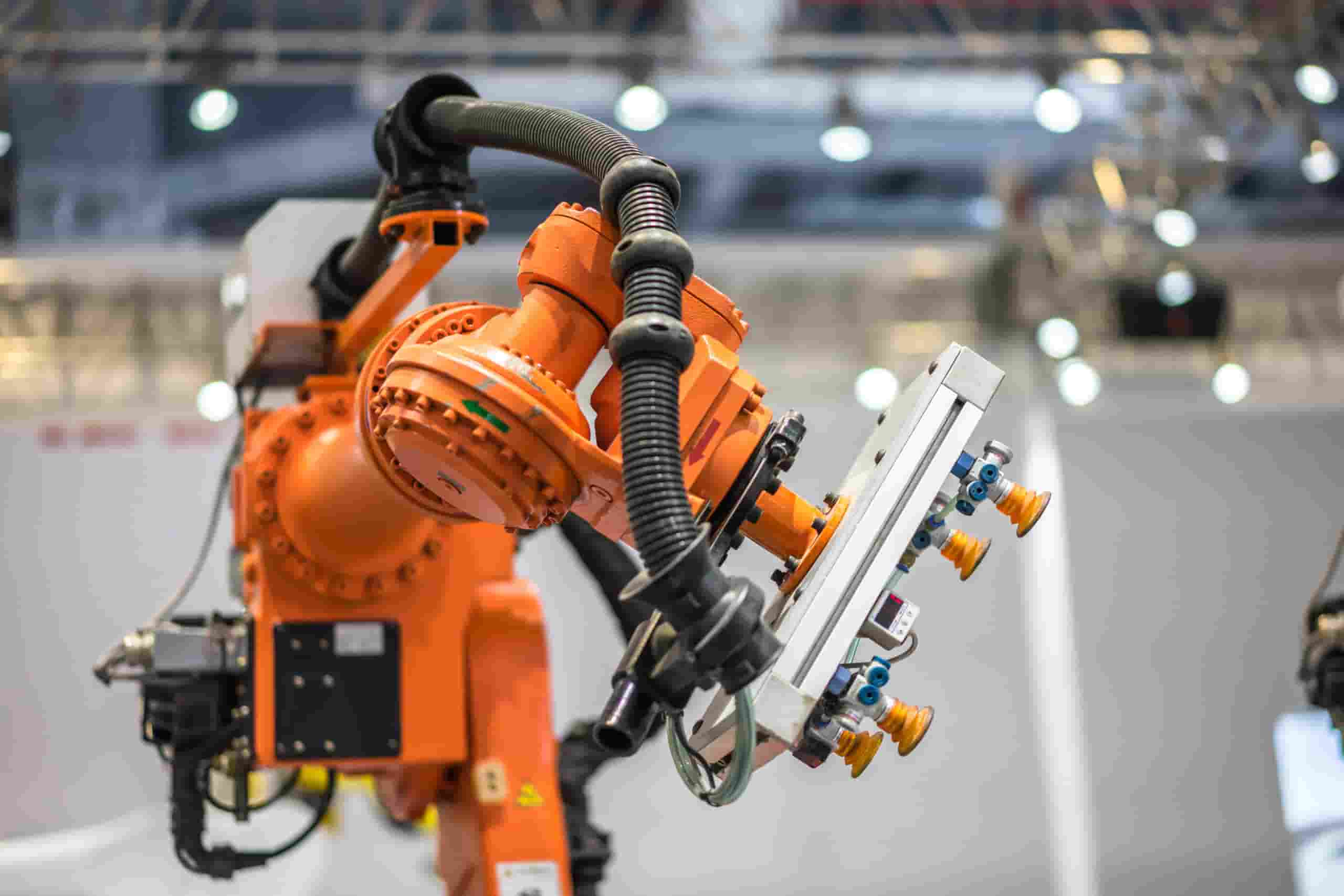
For this month’s Five Questions feature, we interviewed ARM Member Dijam Panigrahi, Co-Founder & COO at GridRaster, a Silver Level ARM Member! Dijam has been an extremely active ARM Institute Member, participating in ARM Institute-funded projects and winning an ARM Champion Award for his impact across manufacturing at our 2024 Annual Member Meeting.
GridRaster’s impact epitomizes what’s possible when you create dual-use solutions for manufacturing at large and the Defense Industrial Base (DIB), fitting perfectly into the ARM Institute’s mission. GridRaster and all 450+ member organizations in our consortium are focused on strengthening U.S. manufacturing and revitalizing the Defense Industrial Base. This work is integral as the Department of Defense looks to rebuild our military by enhancing manufacturing capabilities.
Learn more about Dijam and GridRaster in the interview below!
1. We always like to start by exploring our expert’s background. Can you tell us about your background and what compelled you and your other team members to create GridRaster?
I come from an engineering background with extensive experience applying cutting-edge technologies to real-world challenges, particularly in delivering enterprise solutions. Over the years, I’ve held a variety of roles across engineering, product development, and business, allowing me to sharpen my technical expertise while building a strong business vision. I am deeply passionate about the transformative power of technology — particularly the convergence of the physical and digital worlds — and how emerging innovations are reshaping the way we interact, both in the workplace and in everyday life. I’m particularly fascinated by the convergence of AI, AR/VR, robotics, and cloud computing to revolutionize industries and empower operators at every level – supporting innovation in ‘atoms’ using ‘bits!
My co-founders and I have been fortunate to help define, shape, and commercialize several breakthrough technologies, including mobile computing, wireless communications, and XR. At GridRaster, we recognized the tremendous potential of Spatial AI to better understand the physical world and transform critical workflows. Through our entrepreneurial journey, we identified a major gap: industries vital to national security and manufacturing were burdened by manual, error-prone, and slow processes that could not meet future demands. We saw an opportunity to apply Spatial AI, XR, and cloud computing to modernize these workflows — delivering faster, more accurate, and cost-effective solutions for manufacturing, maintenance, and sustainment.
Today, we are proud and privileged to serve a vital mission: empowering operators and modernizing critical industrial capabilities to strengthen the U.S. industrial base.
2. What most excites you about your work at GridRaster? For those unfamiliar with GridRaster, what industry problem is your organization focused on solving?
What excites me most is seeing the tangible, real-world impact of our work — when the technologies we develop not only enhance operational efficiency but also directly contribute to strengthening our nation’s defense readiness and manufacturing resilience. It’s equally inspiring to collaborate with some of the best operators in the field, learn from seasoned experts, and tackle the complex challenges facing the industry today.
At GridRaster, we are focused on advancing industrial automation by leveraging Spatial AI and XR technologies to support manufacturing and sustainment processes for highly complex, large-scale assets — such as aircraft, military ground vehicles, and heavy industrial equipment. Traditional methods remain manual, labor-intensive, and prone to human error. By applying vision-based Spatial AI and digital twin technologies, we accelerate human-machine collaboration, streamline inspections, enable robotic repairs, improve precision, and deliver significant cost savings — driving modernization across the organic industrial base.
3. GridRaster has participated in several ARM Institute Projects, including winning a Defense Manufacturing Technology Achievement Award for one.
Can you tell us about your experience participating in ARM Institute projects? How are ARM Institute projects different from others that you’ve worked on?

Participating in ARM Institute projects has been an incredibly rewarding experience. These projects are uniquely mission-driven — focused on solving real and pressing manufacturing and sustainment challenges with national security and workforce resilience at their core, ultimately benefiting the broader industrial ecosystem.
What truly sets ARM projects apart is their focus on addressing high-impact challenges within a highly collaborative environment. Through these efforts, we have the opportunity to work alongside partners from industry, government, and academia, ensuring that the solutions we develop are practical, validated, and ready for real-world transition. Critically, we are able to test our technologies in operational environments, gather continuous feedback from seasoned end-users, and iterate rapidly to achieve the desired performance. This cycle of breakthrough innovation, combined with relentless execution and focus on mission-readiness, was a key factor behind receiving the Defense Manufacturing Technology Achievement Award (DMTAA).
The project rigor, structured collaboration, and shared sense of purpose fostered by the ARM Institute create an environment where innovation truly thrives. Winning the DMTAA alongside the ARM Institute was a tremendous honor for our team and a testament to the transformative impact of this model.
4. What advice do you have for other ARM Members who are looking to get more involved in ARM Institute projects?
My advice would be: be proactive, collaborative, and end-user focused. Work closely with end-users, seek their feedback early and often, and share lessons learned across the broader ARM ecosystem. For example, during one of our projects, we partnered with end-users and the DoD ManTech community to conduct in-person demonstrations of our technology in operational environments. We invited experts from both the DoD and industry to test the system firsthand and provide feedback. This approach not only helped us refine our solution but also opened doors to new end-user connections and transition opportunities.
It’s also critical to invest the time to thoroughly understand the technology focus areas and capability gaps identified by ARM. Reach out early to potential collaborators — whether they are government organizations, prime contractors, OEMs, or academic researchers. Building a strong, complementary team is key to both winning projects and executing them successfully.
And finally, always think beyond just demonstrating a technical capability. Focus on how technology will transition into real-world operational use. Transition potential is the true measure of success.
5. We’ve recently opened registration for our 2025 Annual ARM Member Meeting taking place Sept. 3-5 in Pittsburgh! GridRaster has been an active participant in prior ARM Member Meetings and you were recognized with an ARM Champion award at our 2024 event.
Can you tell our readers about the value you’ve found in participating in the Member Meeting? What advice do you have for ARM Members who might be attending for the first time or looking to get more involved?

Every year, we look forward to the ARM Member Meeting — it’s truly one of the most valuable industry events we participate in. It’s a rare and powerful gathering where technology innovators, end-users, industry experts, program managers, and researchers come together, all focused on solving the critical challenges facing the American industrial base. Through these meetings, we’ve formed key partnerships, launched new project ideas, and even shaped aspects of our product development based on the conversations and insights shared at the event.
For first-time attendees, my advice is: come prepared, stay open-minded, and engage actively. Don’t hesitate to introduce yourself, share your capabilities, and ask others about the challenges they are tackling. The ARM community is incredibly welcoming, and the more you invest in building connections, the more value and opportunity you’ll gain from the experience.
[Note from the ARM Institute: Our Annual Member Meeting is our cornerstone event, convening representatives from across our 450+ member organizations for three days of networking, collaboration, and knowledge-sharing. This event is free to attend, but open only to ARM Members. Learn more about our event, including sponsorship opportunities, here. Email us at [email protected] to join our consortium in time to attend.]
Bonus Question: Is there anything else you’d like to add?
I’d like to express our sincere thanks to the ARM Institute for its pivotal role in advancing U.S. manufacturing innovation and strengthening the defense industrial base. Organizations like the ARM Institute are essential to ensuring that new technologies move beyond the lab and into production lines, depots, and field operations where they can make a lasting impact. At GridRaster, we are proud to be part of this important mission and look forward to continuing our collaboration with ARM and its members to help build the future of manufacturing. We also extend our heartfelt thanks to our DoD end-users and customers for their unwavering support and the opportunity to contribute to our nation’s security.
Join GridRaster and the ARM Institute’s 450+ Member Organization Consortium in Driving the Future of U.S. Manufacturing
Ready to see how you can collaborate with the ARM Institute and our 450+ member organization consortium to strengthen U.S manufacturing and revitalize the Defense Industrial Base (DIB)? In collaboration with our members, the ARM Institute leads the way to a future where people and robots work together to respond to our nation’s greatest challenges and to develop and produce the world’s most desired products.
We do this by funding collaborative robotics and artificial intelligence (AI) technology projects that bring together diverse project teams, building workforce solutions (including RoboticsCareer.org and the ARM Institute Endorsement program), enabling networking between competitors and organizations that otherwise may not have had the opportunity to connect, providing services that support manufacturers in adopting robotics solutions, and more.
Explore membership here
Join our mailing list
ABOUT THE ARM INSTITUTE
The Advanced Robotics for Manufacturing (ARM) Institute is a Manufacturing Innovation Institute (MII) funded by the Office of the Secretary of Defense under Agreement Number W911NF-17-3-0004 and is part of the Manufacturing USA® network. The ARM Institute leverages a unique, robust, and diverse consortium of 450+ members and partners across industry, academia, and government to make robotics, autonomy, and artificial intelligence more accessible to U.S. manufacturers large and small, train and empower the manufacturing workforce, strengthen our economy and global competitiveness, and elevate national security and resilience. Based in Pittsburgh, PA since 2017, the ARM Institute is leading the way to a future where people & robots work together to respond to our nation’s greatest challenges and to produce the world’s most desired products. For more information, visit www.arminstitute.org and follow the ARM Institute on LinkedIn and X (formerly Twitter).
